Shoppers are more discerning and savvier than ever. They expect every online experience to feel as engaging as Instagram, as seamless as Uber, and as satisfying as Spotify. And if things don’t go smoothly on your site, they have thousands of other brands to choose from. But, even with these sky-high expectations, the right user experience will keep shoppers engaged and ready to buy. This post will explore the top UX trends for eCommerce brands, so you can take away ideas that will improve your online business.
Why User Experience is Important
User experience refers to the end-to-end experience shoppers have on your website. It influences whether they decide to buy something from you, come back to your store again, or leave for your competitors.
In addition to design, UX depends on several elements that should all work together to deliver intuitive, consistent, and engaging shopping experiences. Since 88% of consumers won’t return to an eCommerce site after a bad experience, you need to make sure it’s easy, fast, and enjoyable for shoppers to:
Here Are the Top 8 UX Trends for eCommerce Brands Today
The key to a successful UX is continuously evolving alongside your customers and anticipating exactly what they need. A website user takes 0.05 seconds to form an opinion about your site, so it’s important to deliver a great experience right off the bat.
1. Opt for a clean, simplified aesthetic
Even before the global pandemic, direct-to-consumer brands were famous for creating a new wave of minimalist, clean branding. In 2021, this has gone from being on-trend to a true source of comfort for shoppers in a new reality where hygiene and cleanliness have become paramount. Digital psychologist Dr. Liraz Margalit found that since the outbreak of COVID-19, global consumer behavior is shifting toward a preference for “a clean, neat design that can re-assure and encourage them to purchase from a website.”
Even if your brand is known for a maximalist aesthetic, you can create an online presence that feels streamlined. For example, Gucci is known for its colorful and loud design, but on their homepage, they balance the “volume” of their products with a lot of white space, minimalist typography, and a clear, high-contrast menu.
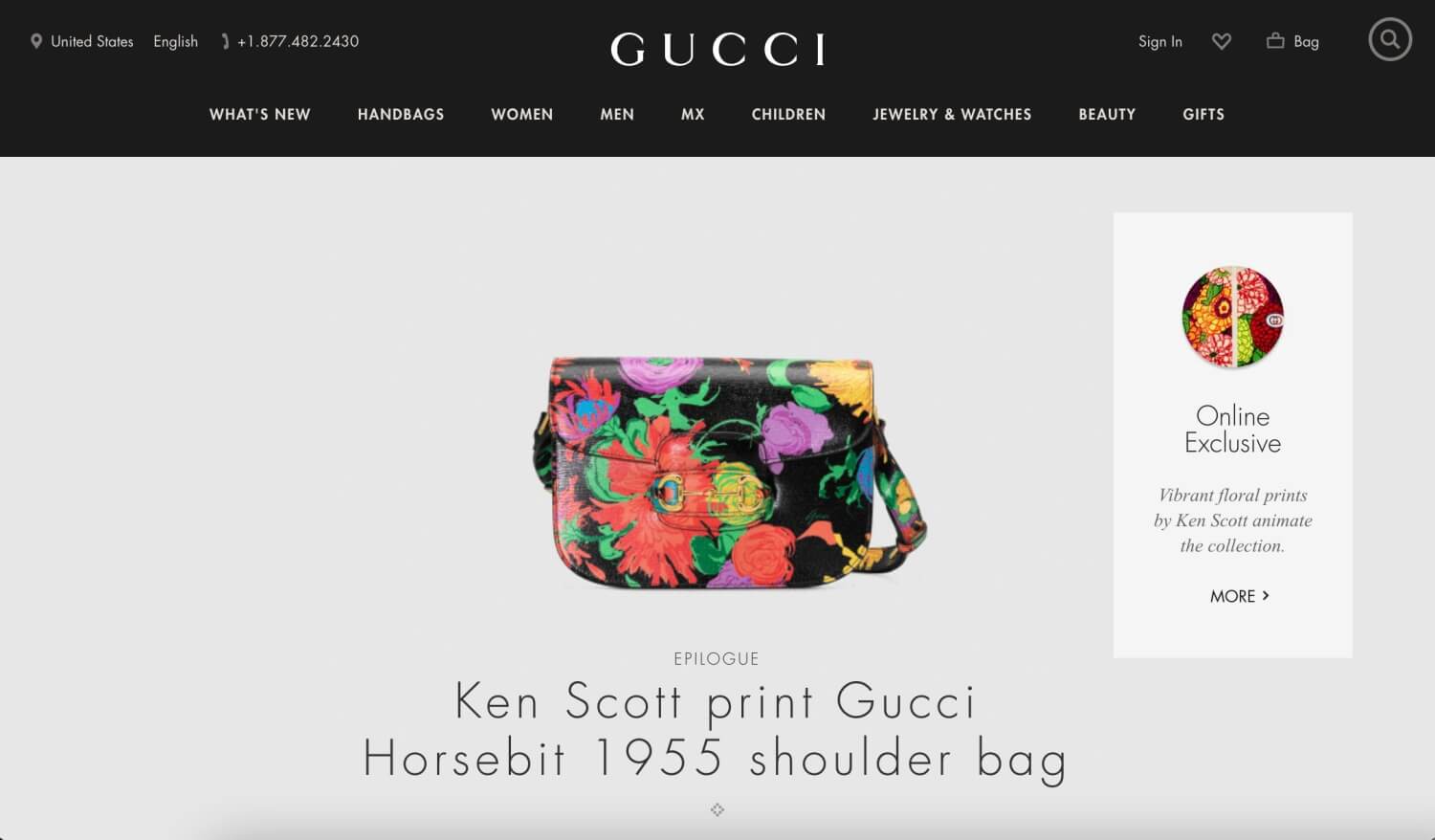
Korean fashion and beauty retailer Style Nanda went as far as to change its entire website look and feel from a bold, cotton candy color scheme into a sleek, minimalist look. Lots of white space, simple fonts, and muted colors make browsing feel straightforward and easy.
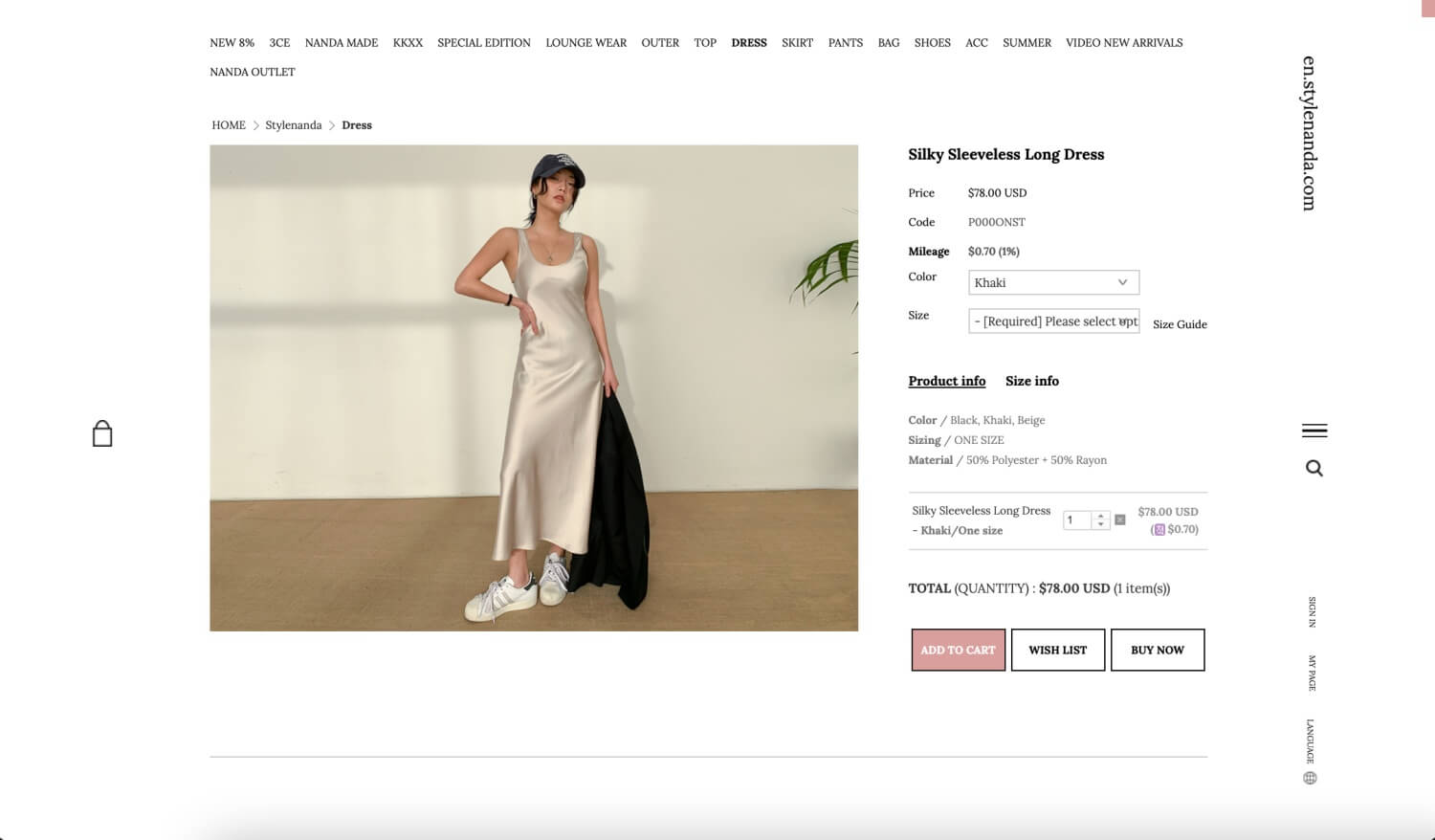
The majority (53%) of shoppers conduct extensive research into the products they want to buy. This is particularly true for high-value purchases, like jewelry, home decor, and electronics. If you can help them do the bulk of this research without leaving your site, you’re more likely to win them over, faster. Since these days, shoppers may not even be able to see the item they want in-store, this is especially important. But just like in-store shopping, you need the find the most immersive and engaging way to showcase a product.
In light of this shift, one of the key UX trends for eCommerce brands that we’ve seen lately is highly engaging product page tools, designed to entertain, educate, and increase shopper trust.
Take a look at how On Running helps shoppers do comparative research directly on-site. Their sleek comparison tool addresses the factors shoppers care about most without adding any clutter or noise to the experience.
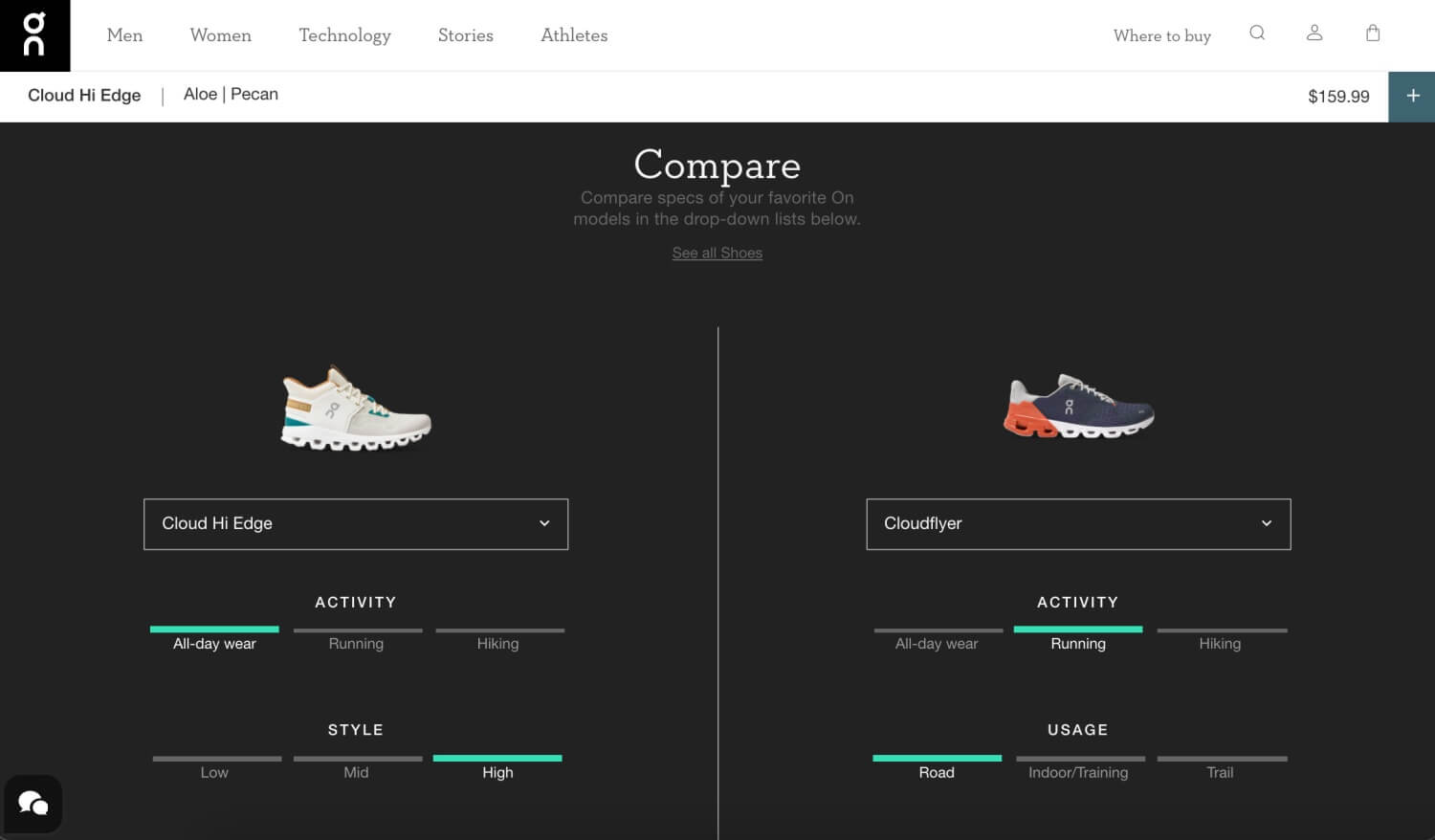
Crate & Barrel also goes the extra mile to give shoppers all the information they need to make a decision. In addition to typical product page details, the home decor retailer created a unique visual experience, allowing shoppers to upload a photo of their home to gauge how products will look “in real life.”
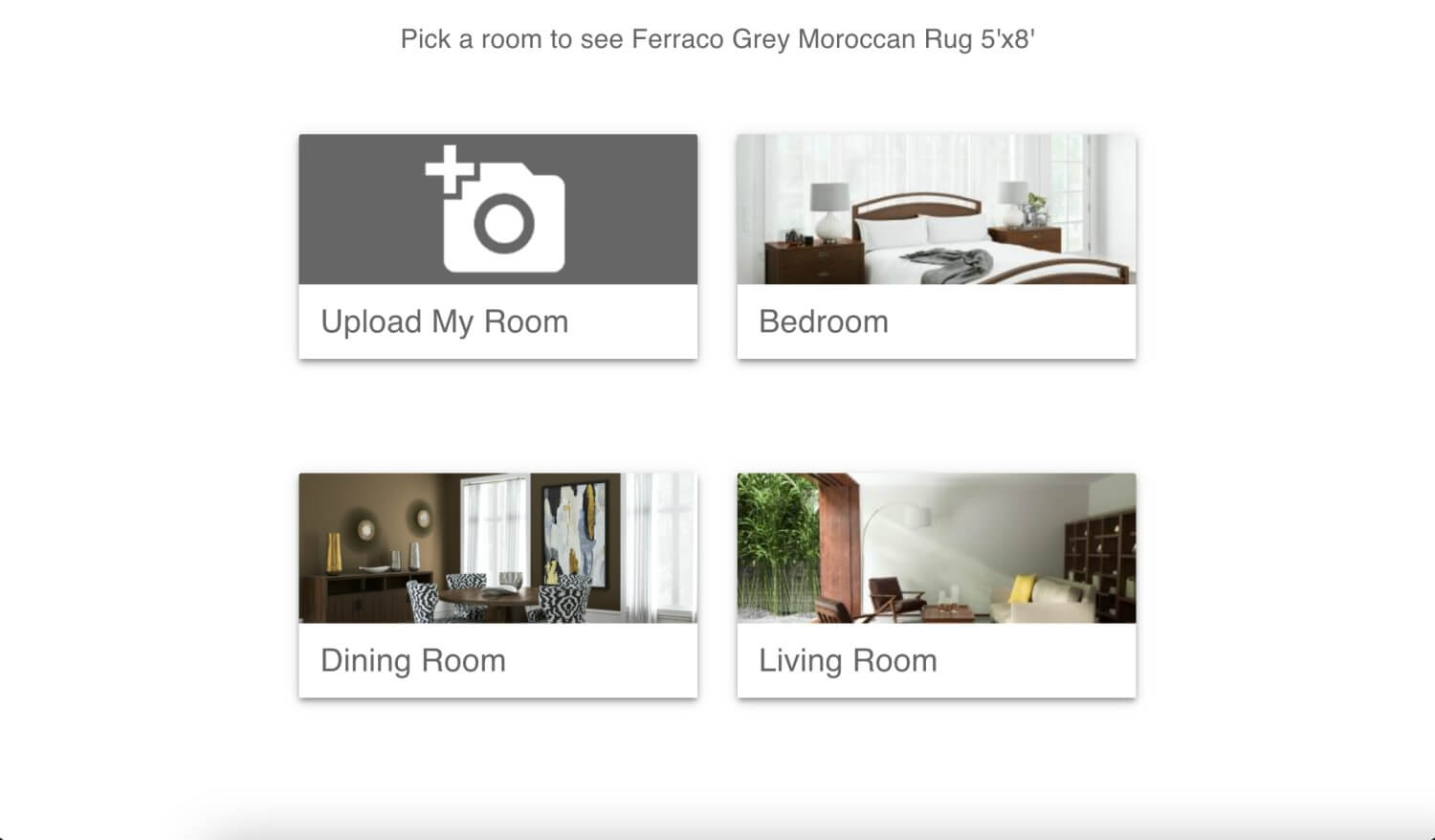
3. Make discounts a part of the experience
This one depends on your brand strategy. If you’re known for providing shoppers with a good deal, don’t make them seek out sales throughout your whole inventory. Help them feel like they’re finding value in other ways.
For example, Costco is known for its treasure hunt style of in-store shopping, with unexpected deals on a varied range of products that shoppers weren’t necessarily looking for. As people continue to stay at home, they recreated a similarly delightful experience online. Consumers wanting to find great deals on limited-stock items can either click on “Treasure Hunt” in the main menu or search for it, and the site instantly filters for products tagged with “treasurehunt.”
For fashion brands, this could look like a “last chance” or “one-of-a-kind” section that reproduces the feeling of finding an unexpected, amazing deal in-store.
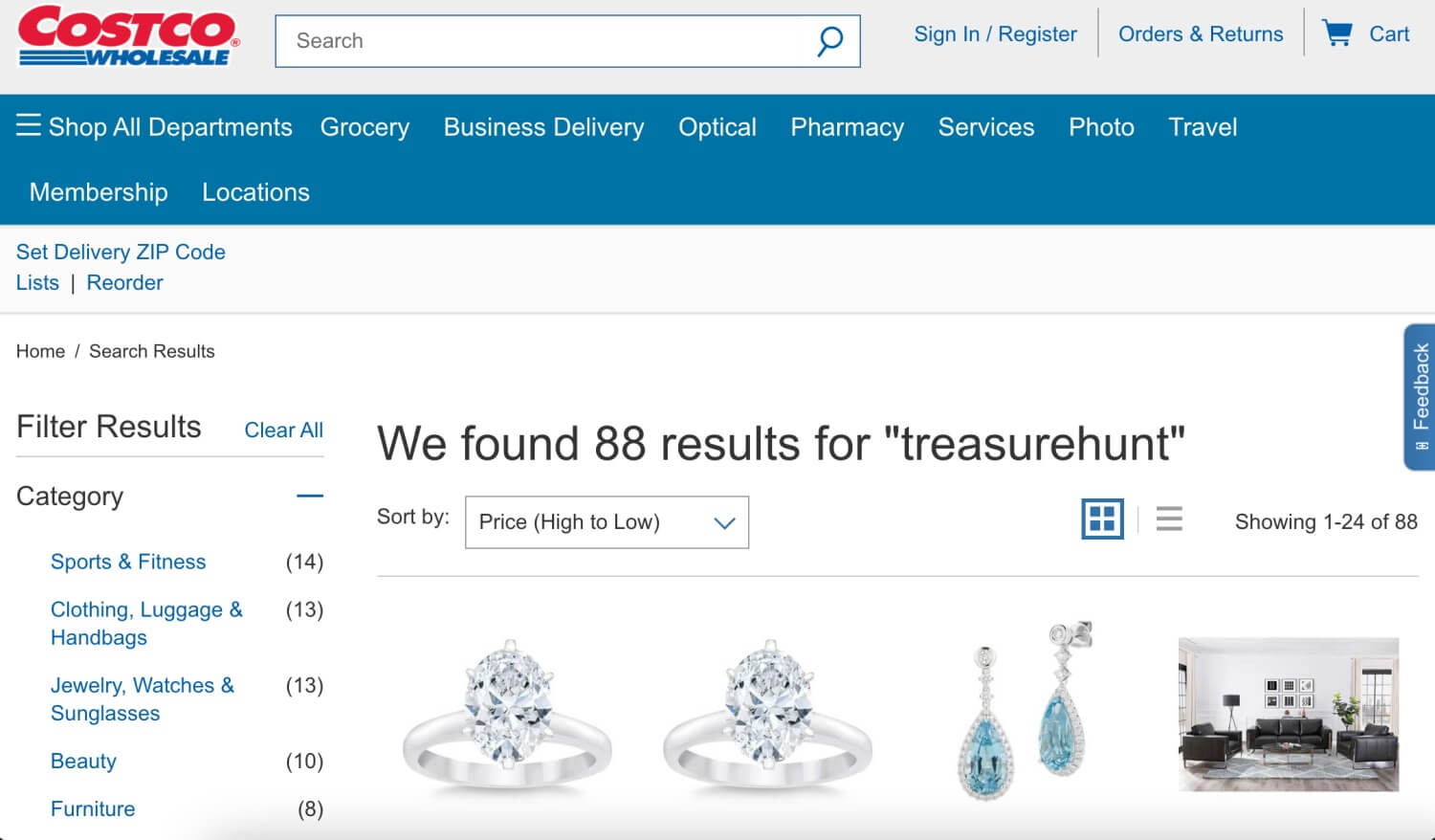
4. Simplify product discovery
A list of UX trends for eCommerce brands wouldn’t be complete without addressing how shoppers actually find products on your site. By investing in product discovery solutions, you can connect shoppers to the items they have in mind with minimal friction. For example, Polish furniture retailer yestersen sought to make on-site product discovery feel as intuitive as walking through a furniture showroom and pointing out what you like.
They provide inspirational images as well as a visual search feature, enabling shoppers to “follow” and find items that catch their eye without even pausing to think about what they’re called, resulting in the smoothest possible user experience.
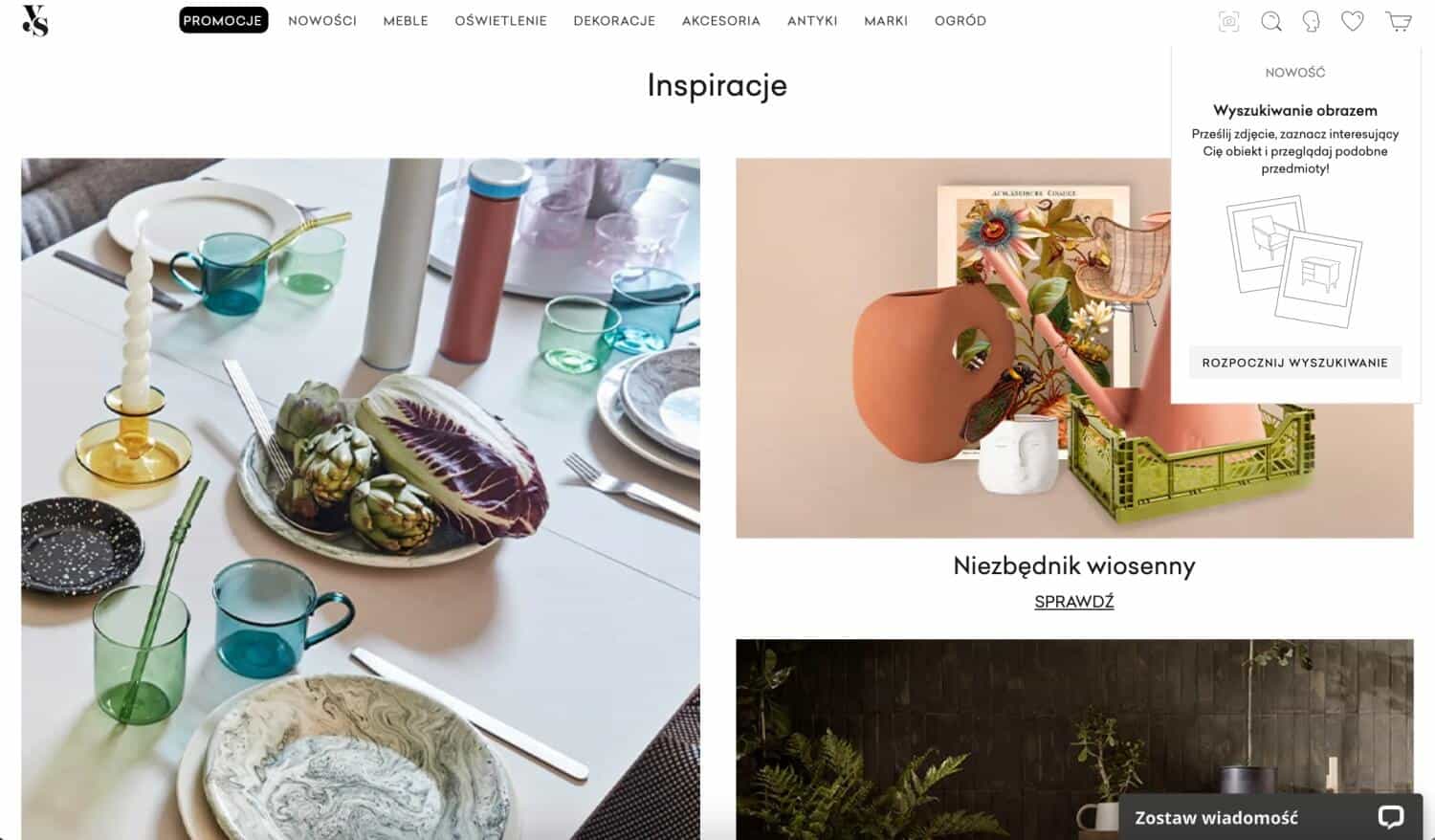
Social drives business. Brand communities are sources of consumer insights and collaborations. They also attract, engage, and retain more customers. In fact, 53% of shoppers who are part of a brand’s social community are more loyal to that brand.
However, brands often struggle to take the conversation from social to their website. Lately, forward-thinking brands have begun creating their own social shopping communities directly on their website or app, adding a communal element as a core part of the overall UX. Customers can share photos, interact with each other, ask and answer product questions, explore style ideas, and chat in general. Monki’s Monkisphere community pops up right on product detail pages, or shoppers can visit the forum directly, making it quick and convenient for them to become active community members.
6. Anticipate (& eliminate) checkout friction way in advance
The average shopping cart abandonment rate for online retailers is 71.18%. To ensure shoppers complete their purchases, brands and retailers have started to address checkout and fulfillment concerns at the initial stages of the buying journey.
For example, when changing site preferences, ASOS immediately displays delivery and payment options, as well as applicable discounts.

Similarly, Oak & Fork enables shoppers to choose between shipping or in-store pick up right on the product detail page. Consumers can check the store inventory and make an informed decision accordingly.
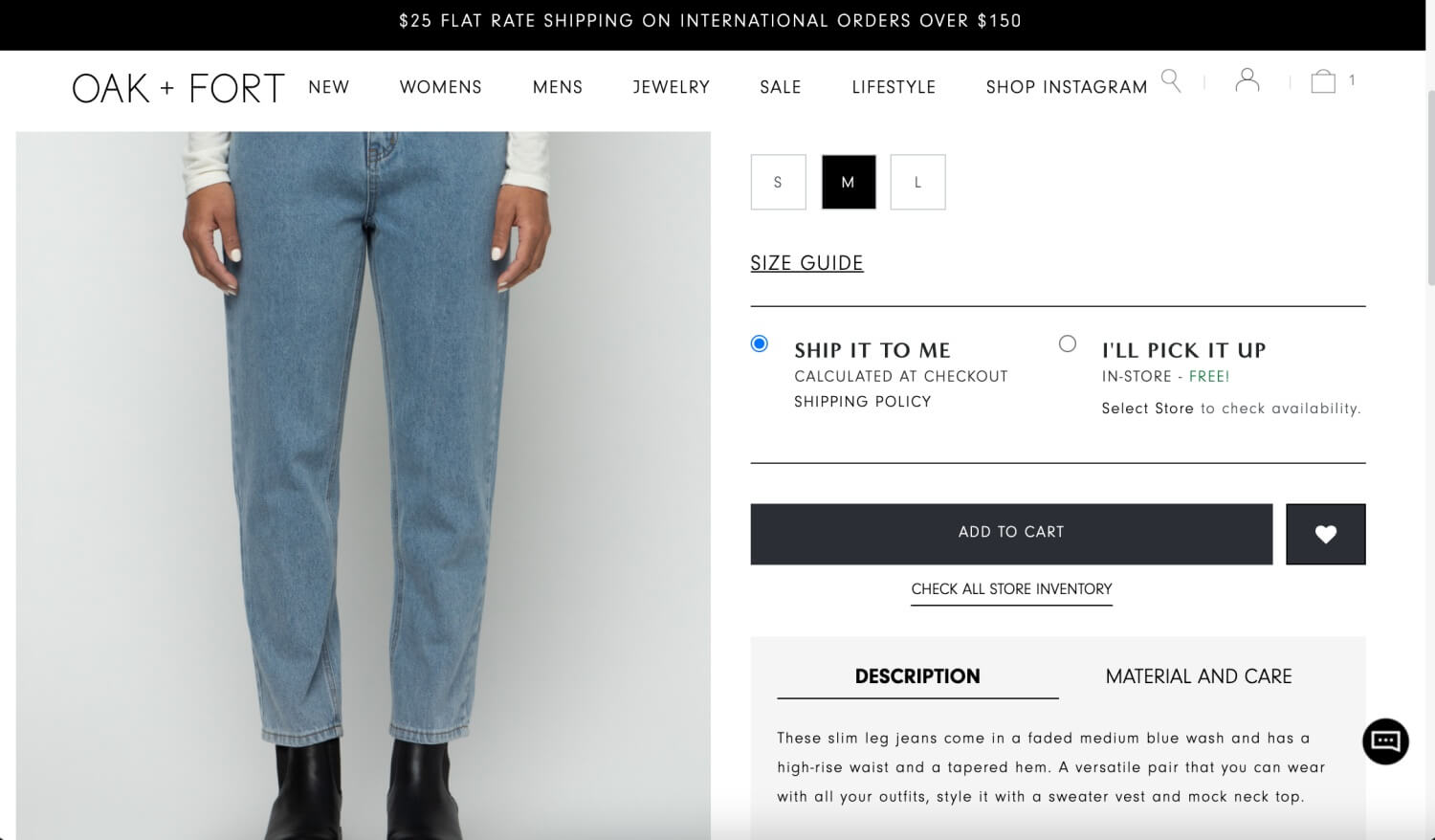
7. Bring your brand values into the UX
Consumers are increasingly vocal about their expectations from brands when it comes to sustainability. More than anything, they expect brands to be transparent.
While some brands do this by sharing their values and efforts on social or providing eco-friendly packaging, there’s also been a clear UX trend toward incorporating those values into the on-site journey.
For example, fashion brand Weekday marks products made from eco-friendly materials with a moving strip that reads “recycled material,” “organic cotton,” etc., giving shoppers the opportunity to navigate and select products according to their values. 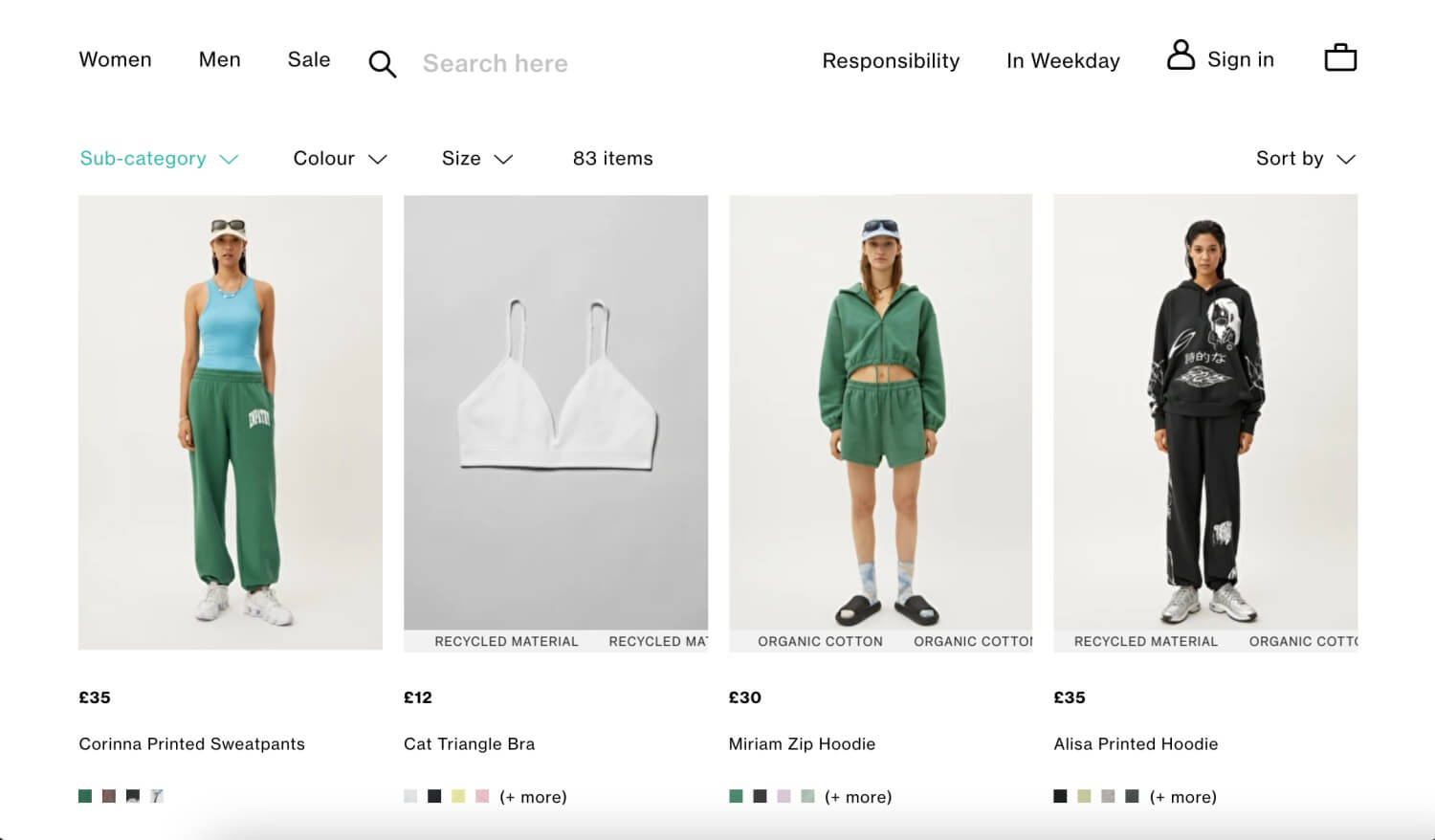
Similarly, personal care brand Bliss allows users to filter products based on attributes such as “cruelty free” and “vegan.”
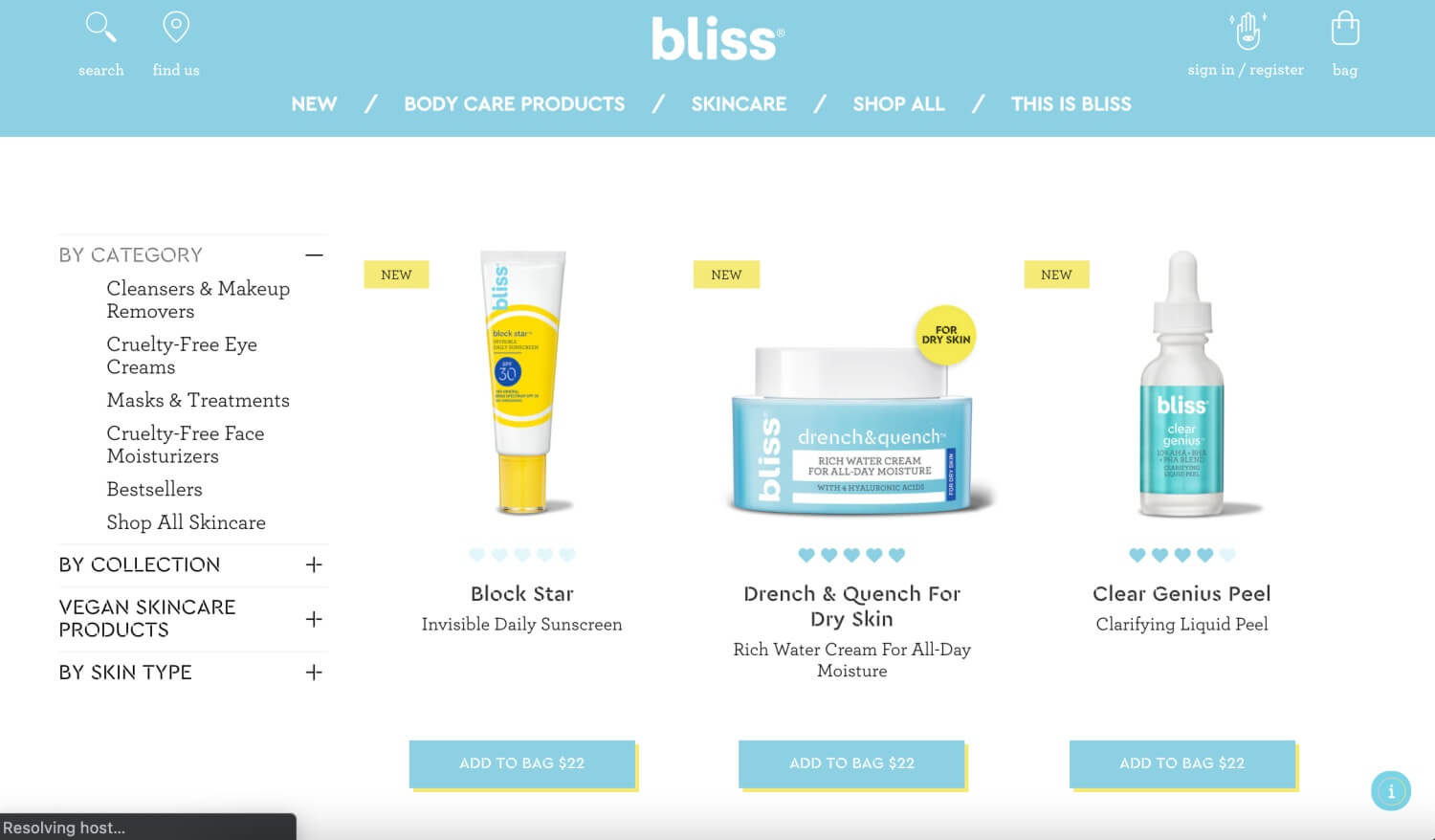
8. Provide multiple ways to shop
Shoppers have a variety of motivations and preferences. They arrive on your site from different circumstances and have unique interests. With this in mind, the last of the top UX trends for eCommerce brands we’re sharing in this post is about giving shoppers unique ways to purchase products and letting them “choose their own adventure,” so to speak.
On its homepage, Kay Jewelers has a clear section sharing different types of services that shoppers can use to find and purchase products, including virtual consultations and visual search.
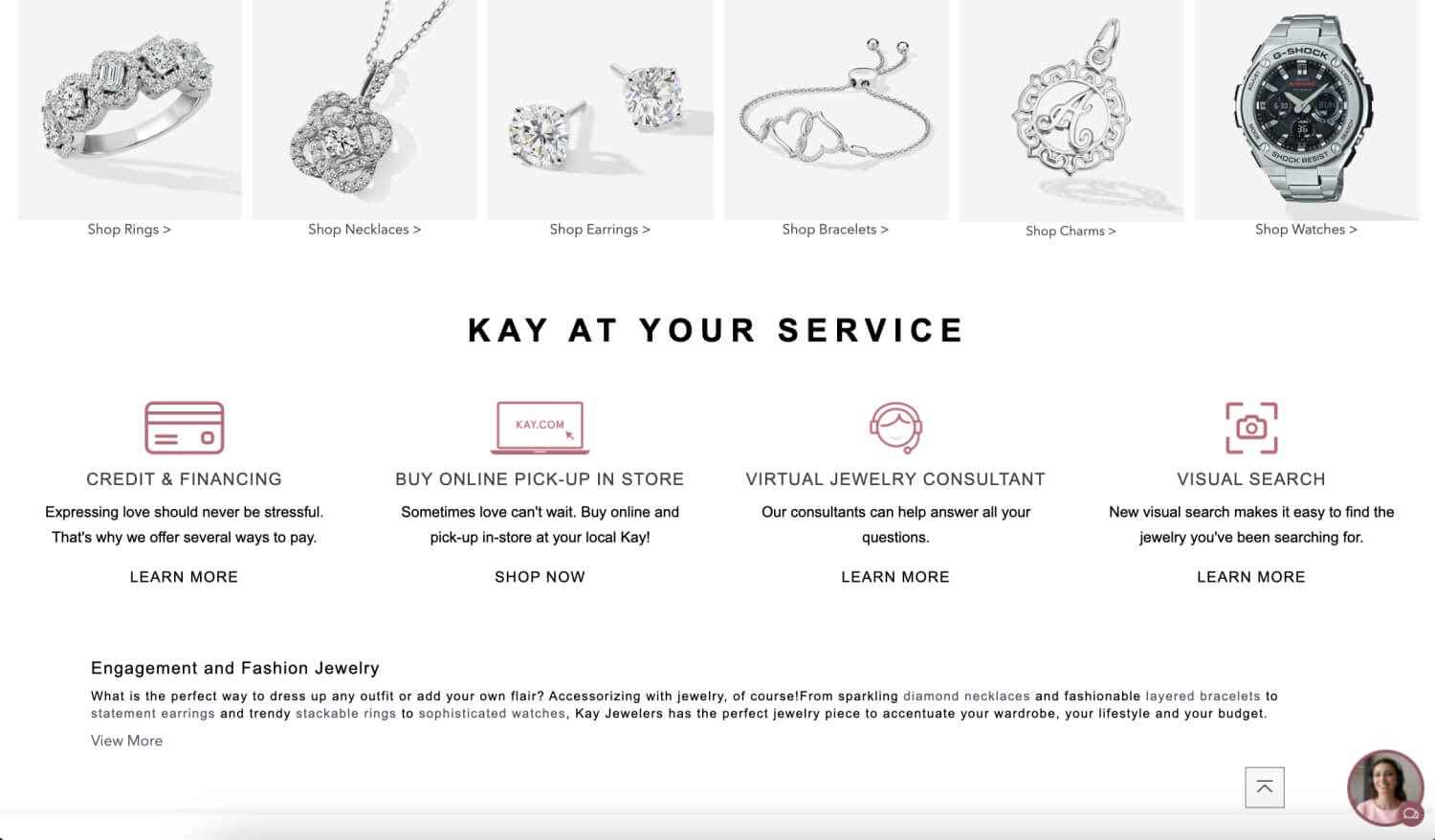
Sunnies Studios has a similar strategy, only the services are located not just on the homepage but also within the menu itself. Buying prescription glasses online can be tricky, so the brand provides shoppers with options that allow them to choose the most comfortable shopping path for them.
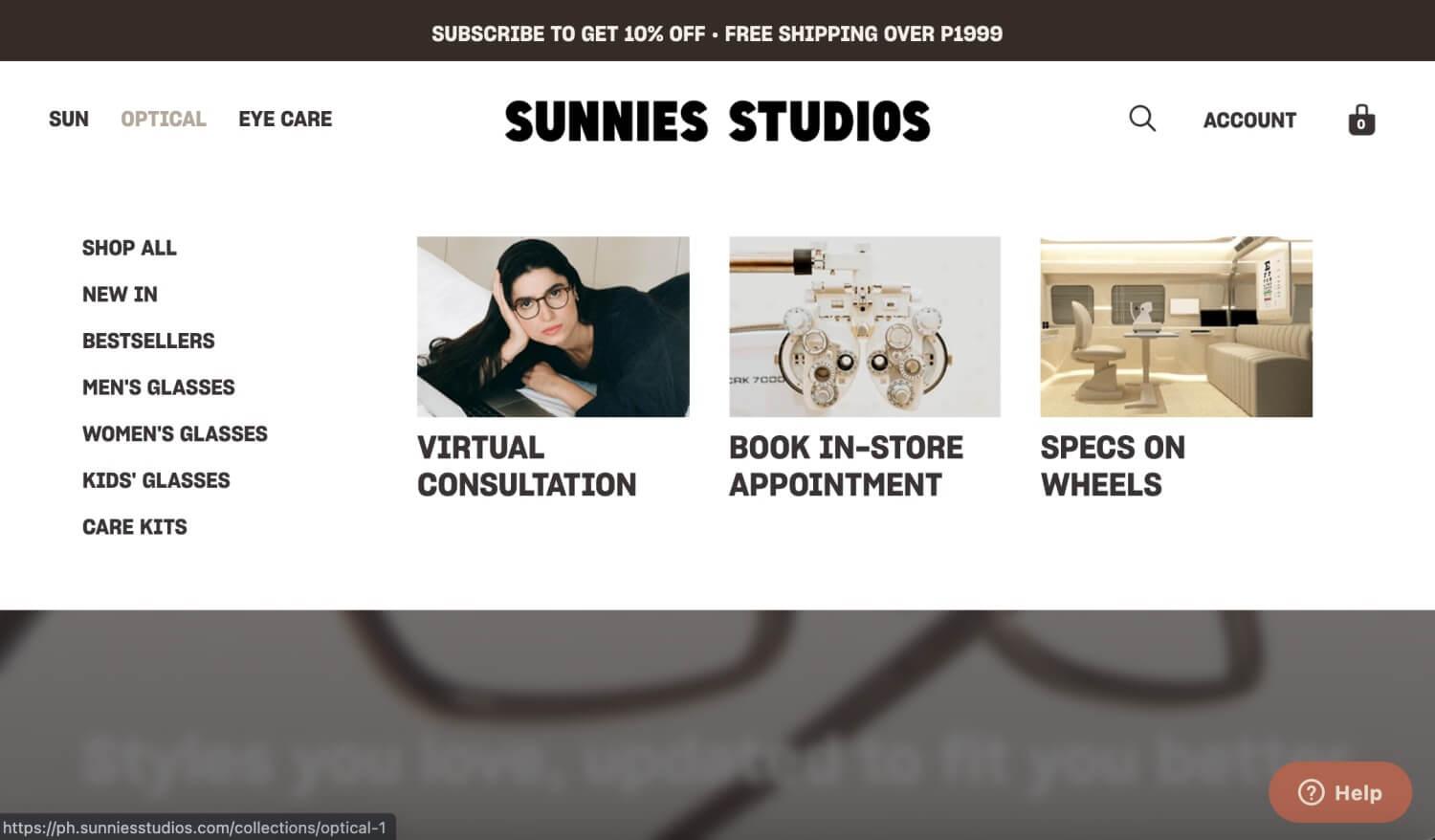
The Secret to Staying Ahead of the Key UX Trends for eCommerce Brands
To become a consistent destination for shoppers, you must understand your customers and constantly evolve your UX along with their changing needs and expectations. Understand their lifestyle, the apps they use, and the experiences they are having online, and combine that with the factors that make your brand unique.
By placing your customers at the center of your UX strategy, you’ll be able to create a website that offers choices and unlocks intuitive journeys for every type of shopper.